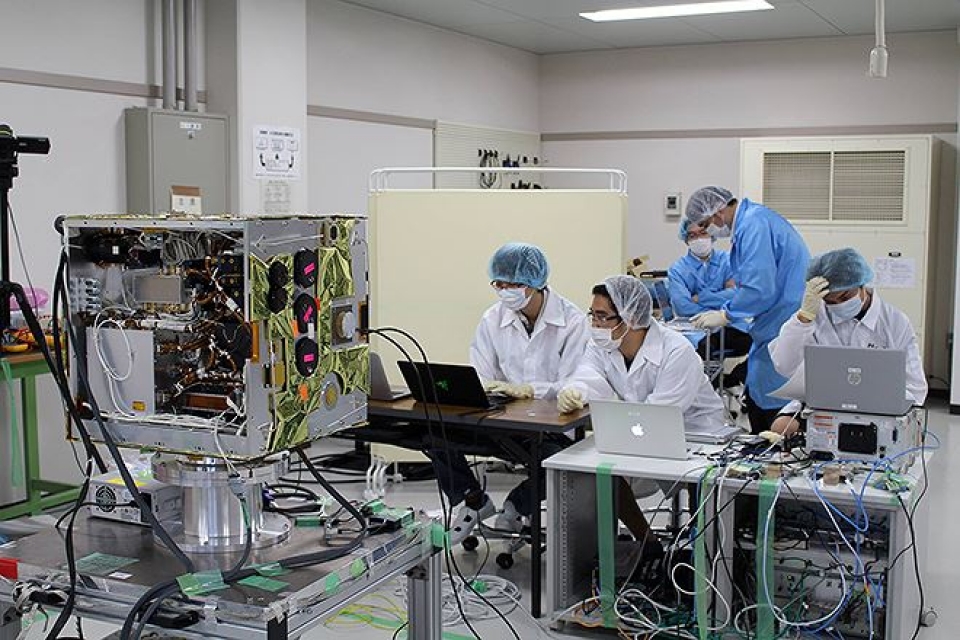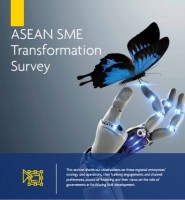
Vietnam poised to lead ASEAN in satellite technology
Latest
| TIN LIÊN QUAN | |
| Survey reveals a gap in product branding | |
| Reaching for the stars, India’s quest for the outer space: Aryabhata to Mangalyaan | |
If the Space Center Project is implemented as scheduled, Vietnam would be leading the region in this field.
Associate Prof Dr Pham Anh Tuan, general director of the Vietnam Space Center, said that space technology symbolizes the technological strength of a country. The race to the sky is where countries show their national resources. Developing space technology, including the mastering of satellite designing and manufacturing plays a very important role.
Countries follow different ways to approach space technology. Some of them buy satellite images from other countries, while others develop space technology on their own.
Vietnam has vowed to go the latter way, like Singapore, Malaysia and Indonesia.
 |
| Vietnam is in the top 4 ASEAN in satellite technology. (Photo: Vietnamnet) |
Vietnam is among the top countries impacted by climate change. Every year, Vietnam experiences typhoons, floods, flash floods and landslides. It is estimated that natural calamities cause damages worth 1.5 GDP, or $3.2 billion, a year.
According to NASA, the use of data from satellites can reduce damages from natural disasters by 5-10 percent, or 0.05 percent of GDP. If Vietnam can master satellite technology, it will not be reliant on foreign image sources, and can take the initiative in programming activities to cope with natural disasters.
Under a roadmap set in the Vietnam Space Center Project, Vietnam would implement the plan step by step, manufacturing micro satellites, small satellites and satellites utilizing the most advanced technology – radar technology (LOTUSat-1 and LOTUSat-2).
In 2013, PicoDragon, a micro satellite with the weight of one kilogram, was designed, manufactured and launched by the Vietnam Space Center. It operated for three months.
Also in the same year, Vietnamese engineers began designing and manufacturing MicroDragon which weighed 50 kilograms, and implemented a part of the project on training 36 aerospace masters in Japan.
Another satellite, NanoDragon, weighing 10 kilograms, is being developed and expected to be launched by 2020.
After PicoDragon, MicroDragon and NanoDragon, Vietnam will set about to work on high-value LOTUSat-1 and LOTOSat-2 which will weigh 570 kilograms, using the latest radar technology with strong features. It can discover objects with the size of one meter and more on the earth’s surface, and carry out supervision day and night in all weather conditions.
Commenting about the current position of Vietnam in ASEAN’s top 4, Tuan said that Vietnam is not inferior to the other three countries in technology and human resources, but its infrastructure is worse.
 | Vietnam’s small firms make technology top priority: Singapore study Small- and medium-sized enterprises (SMEs) in Vietnam have made technology their top investment priority to ensure growth, according to the ASEAN SME Transformation Study. |
 | Project Asteroid using Blockchain: Opportunity for Vietnamese enterprises This is a breakthrough amid the Industry 4.0 of technology application to advance research and exploitation for the sustainable development and peace of humanity. |
 | Book festival to highlight digital technology The Hanoi Book Festival will take place on October 3-7, highlighting modern reading culture. |





















